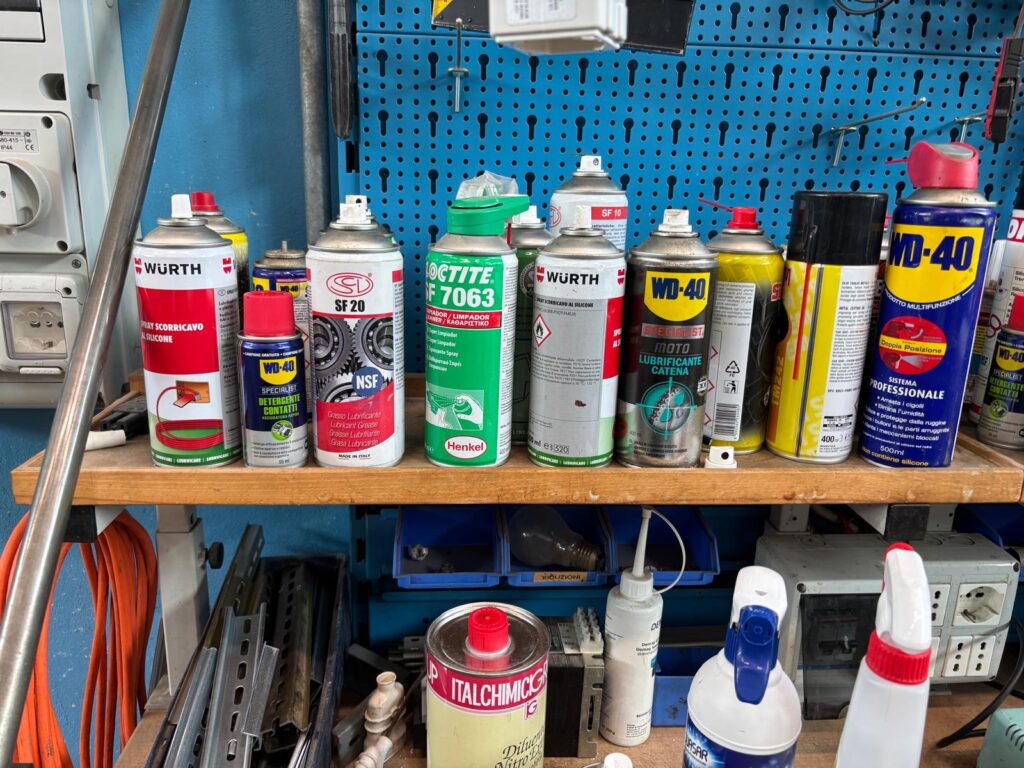When it comes to health and safety at work, one of the most insidious and widespread risks is chemical risk. This risk does not only affect the chemical industry or large factories: it can also affect workshops, laboratories, construction sites, dental practices, hairdressers, cleaning companies, and many other sectors.
What is chemical risk?
Chemical risk occurs when a worker is exposed to hazardous chemicals that can cause harmful effects on health, both acute (poisoning, burns, irritation) and chronic (respiratory diseases, dermatitis, tumors, damage to the nervous or reproductive system).
Chemicals may be present:
- as raw materials (paints, solvents, acids, etc.)
- as intermediate or reaction products
- as by-products or processing residues
Exposure can occur through:
- inhalation (the most common route)
- skin contact
- accidental ingestion
- accidental injection (e.g., punctures with contaminated needles)
What does Legislative Decree 81/2008 provide for?
Chemical risk is regulated in Italy by the D.Lgs. 81/2008, in particular Title IX, Chapter I. The law imposes a series of obligations on employers:
- Identify hazardous substances present in the workplace
- Assess health and safety risks
- Take preventive and protective measures
- Informing and training workers
- Monitor exposure
The term “hazardous substance” refers to any chemical agent classified as such under the CLP Regulation (EC No. 1272/2008): flammable, corrosive, toxic, harmful, sensitizing, mutagenic, carcinogenic, etc.
Risk assessment: where to start?
The first step is to analyze the safety data sheets (SDS) for the substances used. These provide all the essential information: composition, hazards, first aid measures, PPE to be used, etc.
Next, the context is assessed:
- Quantity and method of use
- Frequency and duration of exposure
- Ventilation and confinement
- Presence of particularly sensitive workers
The assessment can be qualitative or quantitative, depending on the complexity. In particularly sensitive cases, it is advisable to carry out environmental measurements or biological exposure tests.
Obligations for the employer
If the risk is negligible to health, a documented assessment is sufficient. However, if there is a significant risk, the employer must:
- Eliminate or reduce the use of hazardous substances by replacing them with safer alternatives, where possible.
- Adopt technical measures (localized extraction, containment), organizational measures (limitation of exposure time), and procedural measures.
- Provide appropriate Personal Protective Equipment (PPE): gloves, masks with appropriate filters, protective eyewear, coveralls, etc.
- Train and inform workers about hazards and proper handling procedures.
What happens if you don’t follow the rules?
Ignoring chemical risks can lead to serious consequences:
- Damage to workers’ health, sometimes irreversible
- Criminal and civil liability for employers
- Significant administrative penalties
- Possible interruptions to work activities by inspection bodies (ASL, INL)
A practical example: the risk posed by solvents
Many companies use organic solvents for degreasing, painting, and cleaning. These compounds (such as acetone, toluene, and methanol) are often flammable and toxic. Prolonged exposure can cause:
- headache, nausea, dizziness
- liver or kidney damage
- chronic neurological effects
The use of ventilated cabinets, resistant gloves, and masks with A1 filters is essential to protect workers.
How can we help you?
Our company supports businesses in chemical risk management with:
- Technical inspections to identify hazardous substances
- Customized chemical risk assessments
- Drafting of technical documentation in accordance with Legislative Decree. 81/08
- Training courses for workers and managers
- Support in selecting and supplying suitable PPE
- Emergency plans and incident management
Our goal is to support you in implementing real and effective prevention measures, protecting the health of your employees and ensuring regulatory compliance.
Conclusion
Chemical risk is not always visible, but it is present in many more activities than one might think. Addressing it with awareness and method means protecting people, productivity, and the company itself.
Are you concerned about your exposure to hazardous substances?
Contact us for advice: we will help you understand, assess, and secure your work environment.
